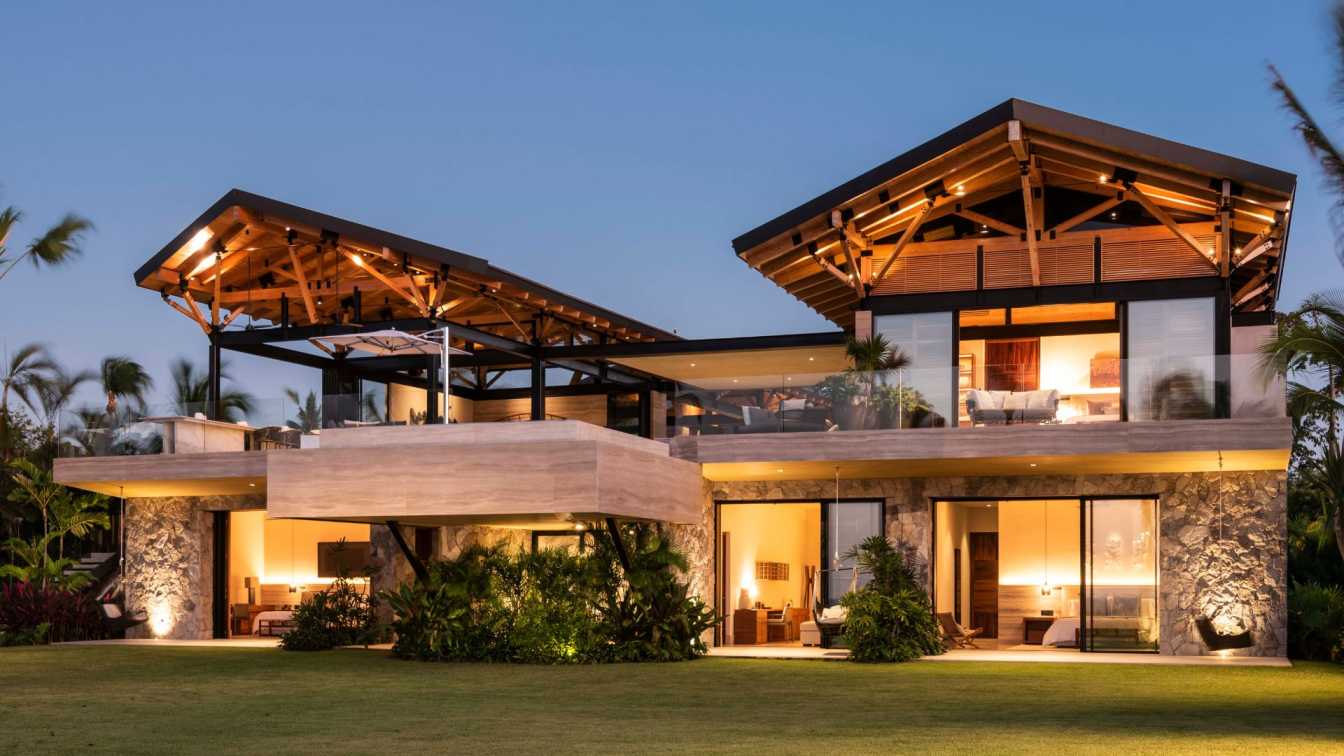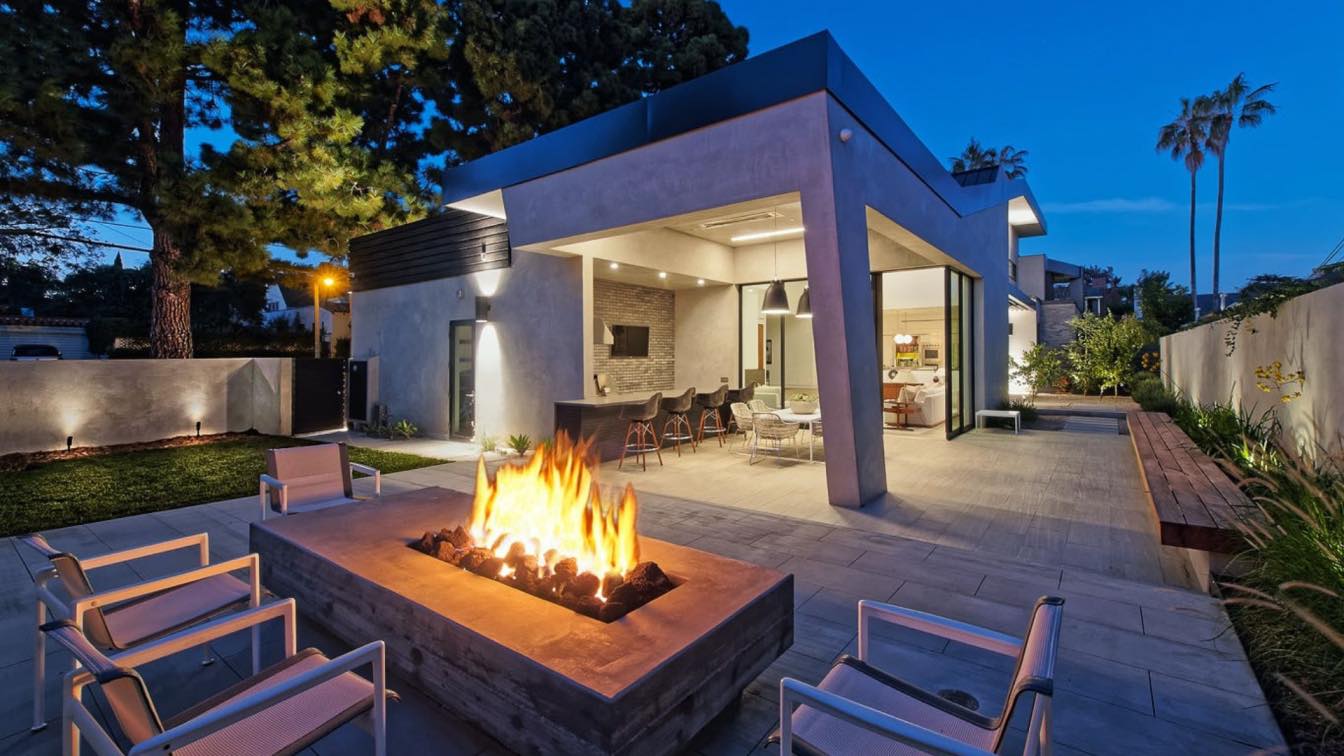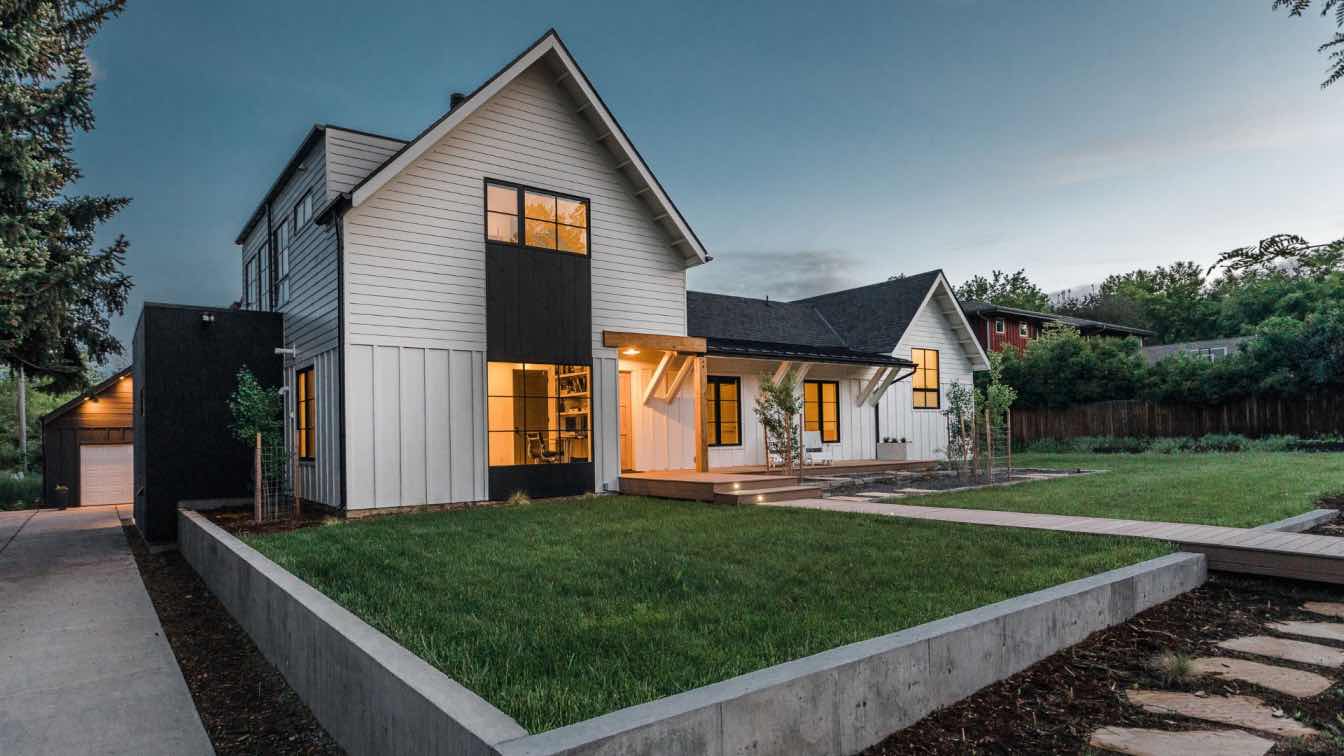Legorreta & Alonso: Casa Riviera Nayarit is a luxury residential project located in the Riviera Nayarit, on the western coast of the Mexican Pacific. This region has become one of the most important and fastest-growing tourist destinations in Mexico due to its over 320 km of untouched coastline with numerous coastal towns. Additionally, it features stunning mountains covered in tropical jungle, natural sanctuaries, golden sandy beaches, palm trees, and luxurious resort hotels. These characteristics make this place an ideal destination for relaxation, tranquility, and disconnecting from urban life.
In 2021, the Riviera Nayarit was awarded six prizes, including two Gold Awards for "Best Wedding Destination" and "Best Emerging Travel Destination in the Americas 2021" at the International Travel Awards, surpassing more than 5,000 destinations worldwide. Since then, the demand for residential and vacation properties has significantly increased both in the national and international markets, making it a favorable place for architectural and interior design exploration.
The project is situated on a plot of approximately 3,700 m² (39,826 sqft) in one of the most private areas of a high-end countryside residential complex with a golf course, clubhouse, and direct access to the sea. The land is surrounded by native vegetation and features a private beach, as well as privileged views of the sea to the east and the golf course to the west. These intrinsic elements were crucial for the design concept and overall development of the house, aiming to achieve a meaningful connection with the environment and its integration with the landscape.

The formal inspiration for the project was based on the conceptual study of a yacht, establishing a connection between its aesthetics and architecture. By closely analyzing the elements of aerodynamics, circulation, and visual reach present in these impressive luxury boats, an integration into the design of the residence was achieved. The elegant lines, sense of movement, and sophistication they transmit were carefully studied and applied in the architectural design, creating a visual continuity between the two.
The house was formalized through a contemporary architectural style based on two main parallel volumes connected perpendicularly by a long hallway. These volumes were separated to provide similar views to each of the interior spaces on both levels. The hallway serves as a central architectural crack, a circulation axis, and the main entrance to the project on the upper level. By connecting the main entrance on the west side with the back of the house on the east side, this element creates a fluid journey that frames a sea view from the moment one enters the house.
The architectural program was designed according to the needs and requirements of the clients. The family for whom the project was intended consists of 16 members from three different generations, making it essential to coordinate with each of them to resolve the distribution of spaces within the formal project proposal. These spaces were located in two main areas corresponding to each of the two levels: the upper floor for public access and the lower floor for private use. The clients sought a restful residence that could accommodate different members of three distinct generations. It was of utmost importance for this house to maintain all the comforts of their urban daily life while connecting with their immediate environment. As the project was meant to host so many users, the involvement of each of them was required in the planning and conception of the spaces to create personalized and functional environments that adapted to their lifestyle.

A significant distinctive feature of the project is the volumes' coverings. These stand out, providing a sense of lightness and creating a visual contrast with the monolithic appearance of the main base bodies, giving the illusion of flying. Laminated pine wood and steel structures in a "spider" form were used for the coverings, offering a modern style in contrast to the rest of the architectural ensemble.
The turnkey interior design was integrated into the architectural project, taking into account the initial inspirations from the team of architects. Each element such as art, furniture, special woodwork, textiles, and decorative pieces were curated and chosen by Uribe Krayer. In this way, the interior design sought to maintain a conceptual dialogue with the architecture by integrating movement inspired by the waves, winds, light, and shadows. This set of concepts translated into creating a suitable environment for rest and family relaxation, establishing a close connection with the site.
As for the exterior materials, light tones were chosen to contrast with the lush green of the site and the blue tones of the sea at the end of the project. At the main entrance of the house, two inclined walls filled with Spanish tiles in warm tones were used, arranged vertically to create a pattern resembling columns. White Wood marble was used on all the walls of the upper-level facade and floors, creating additional continuity inside in the baseboards. This material was chosen for its resistance, durability, and luxury, providing a common thread throughout the entire project. For the walls of the volumes on the lower level, natural and endemic stone in neutral colors was used to intensify the connection with the site. Laminated pine wood was employed for the structure of the roofs and the shutters on the facades, beneath them. Finally, semigloss black-finished steel was incorporated into the structure of the roofs and mezzanine slabs.

Art was one of the cornerstones of the project, functioning as an enhancer of each of the spaces. The project includes artworks curated by Uribe Krayer from prominent authors such as Jan Hendrix, Charabati Bizzarri, and Fernando Pacheco. To continue the conceptual line of the project, each of the artworks, mostly sculptural, strategically arranged in each of the rooms, depending on the work done with the client, manifests a relationship with yachts, either through movement, aerodynamics, maritime connection, or the play of light and shadows present in the water.
Regarding furniture, a blend of Mexican designer furniture and line pieces designed and manufactured in collaboration with artisans through traditional and industrial processes was selected. Uribe Krayer designed specific woodwork and furniture for the project, using natural woods such as parota, marble, and ceramic. Outdoor furniture was a distinctive element. Each of the outdoor spaces features a large number of cushions that maximize the comfort intrinsic to the design of the spacious seating areas. In the selection of textiles, resistance and aesthetic value were prioritized, choosing special fabrics to withstand the inherent climatic conditions of the location.
The coastal residence offers a relaxed and sophisticated space for an extensive family. Through the integration of sea views, active collaboration with architects, clients, and careful selection of materials, furniture, and art, they have managed to create a functional, welcoming, and aesthetically dynamic environment that connects with the essence and beauty of the Riviera Nayarit.







































